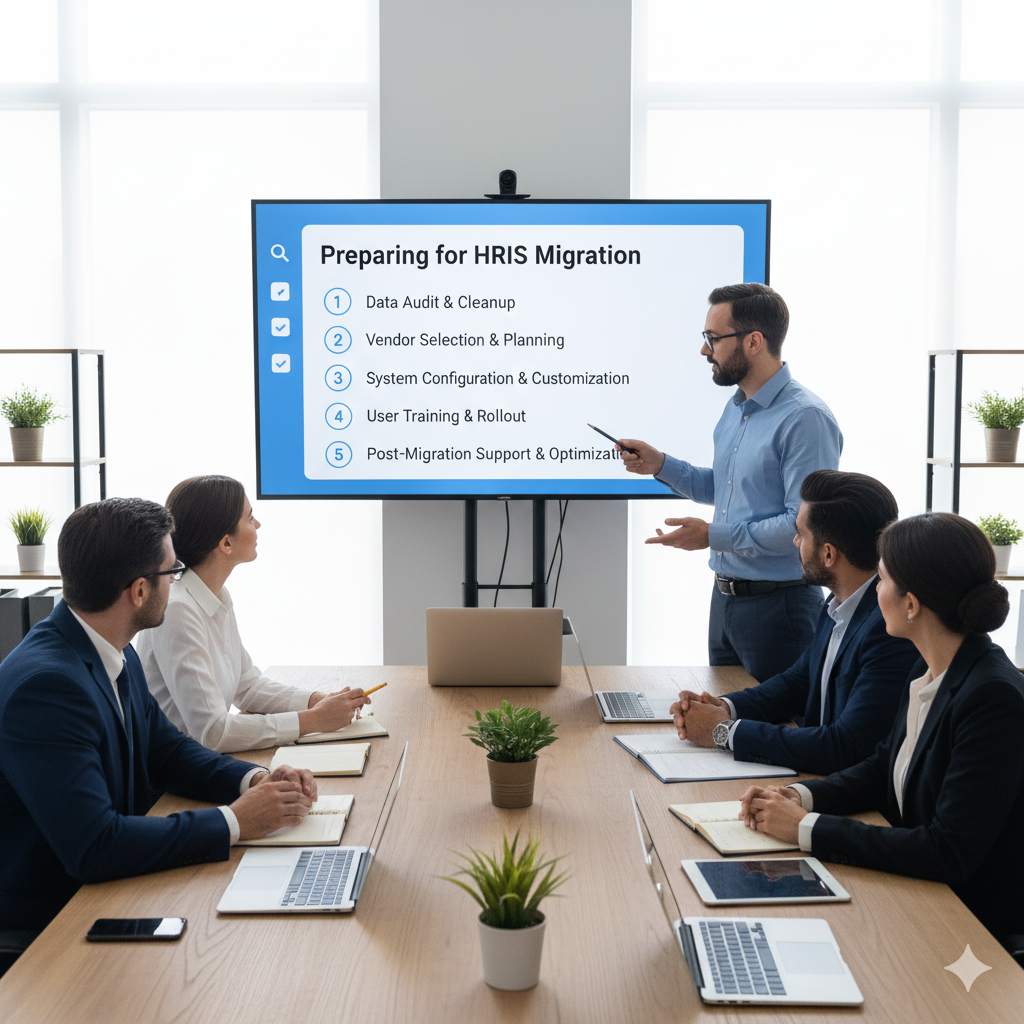As businesses grow, manual HR processes become harder to manage. Payroll delays, attendance errors, and scattered employee records can slow productivity and affect compliance. To solve these challenges, many companies are now migrating to a Human Resource Information System (HRIS) — a digital solution that automates and streamlines HR operations.
However, successful HRIS migration isn’t just about buying software and uploading data. It requires careful preparation, planning, and communication to ensure a smooth transition for your HR team and employees.
In this guide, we’ll walk you through the key steps every business should consider before migrating to an HRIS.
Evaluate Your Current HR Processes
Before implementing a new HRIS, start by reviewing how your current HR operations work.
Ask yourself:
- What HR processes are currently manual or inefficient?
- Which tasks take the most time to complete?
- Are your employee records accurate and up-to-date?
This step helps identify the gaps your HRIS should fill — whether it’s payroll automation, attendance tracking, recruitment, or employee self-service.
Pro tip: Document your workflows and pain points. This will help you choose an HRIS that truly matches your business needs.
Choose the Right HRIS for Your Organization
Not all HRIS solutions are created equal. When choosing a system, consider factors like:
- Local compliance: Does it follow Philippine labor laws (e.g., SSS, PhilHealth, Pag-IBIG)?
- Scalability: Can it grow with your company’s size and needs?
- Integration: Does it connect with your existing tools like biometrics or accounting software?
- Ease of use: Is the interface user-friendly for both HR and employees?
Choosing a localized and reliable solution like the PinoyCode Complete HRIS System ensures your migration process aligns with Filipino workplace standards and government compliance.
Clean and Organize Your HR Data
Data preparation is one of the most critical steps in HRIS migration. Inconsistent or outdated data can lead to serious issues post-migration.
✔️ Remove duplicate employee records
✔️ Standardize formats (e.g., date of birth, department names)
✔️ Verify government IDs, employment status, and salary details
✔️ Back up all data before transferring
A clean database ensures smoother import and reduces migration errors.
Plan Your Migration Timeline
Set a clear migration timeline that minimizes disruption to business operations. Define key milestones:
- Data audit completion
- HRIS setup and configuration
- Data import and testing
- User training and launch
Ideally, perform migration during a low-activity period (e.g., not during payroll cutoffs). Having a well-structured timeline keeps everyone aligned and ensures a smooth rollout.
Train Your HR Team and Employees
Technology adoption depends heavily on user confidence. Conduct training sessions for your HR team and provide clear user guides for employees.
Make sure everyone knows how to:
- Access the system
- Update personal information
- File leaves or view payslips
- Use new HR tools effectively
The smoother the onboarding, the faster your organization will adapt to the new system.
Test Before Going Live
Before fully launching your HRIS, perform a pilot test. Use sample employee data to check for:
- Payroll accuracy
- Attendance tracking functionality
- Access permissions and data visibility
- System performance and reliability
Addressing issues during the testing phase prevents major disruptions once you go live.
Communicate the Change to Everyone
Transparent communication is key to a successful HRIS migration. Announce the changes early, explain the benefits, and encourage employees to embrace the new system.
Highlight how the HRIS will make their lives easier — faster access to payslips, online leave requests, and a smoother HR experience overall.
Conclusion
Migrating to an HRIS can transform the way your business manages its workforce — but success depends on thorough preparation. By evaluating your current HR processes, cleaning data, training users, and testing carefully, you can ensure a seamless transition.
With the right partner like PinoyCode Complete HRIS System, your business can enjoy a modern, efficient, and fully compliant HR solution designed for Filipino companies.
👉 Ready to make the shift? Learn more about how PinoyCode can help your HR team migrate smoothly and confidently.

